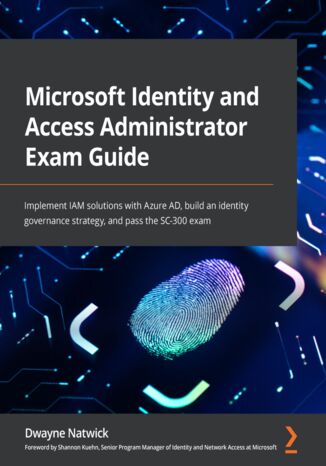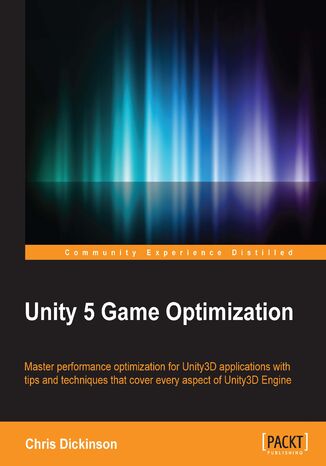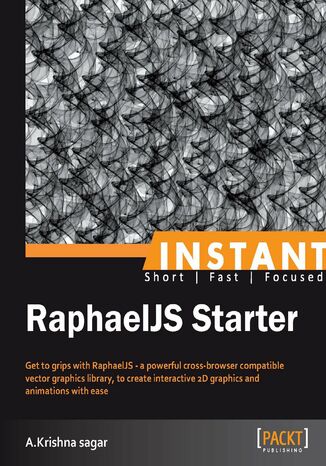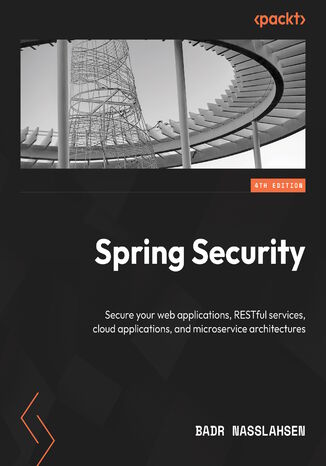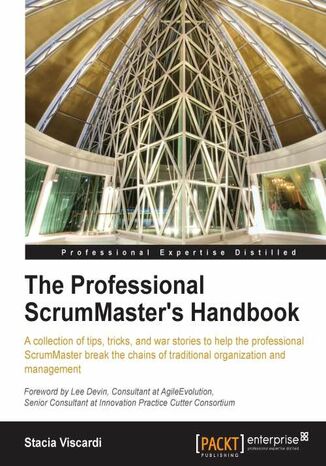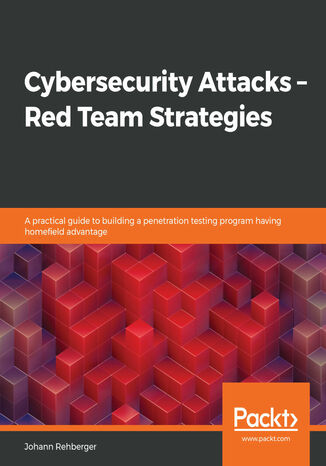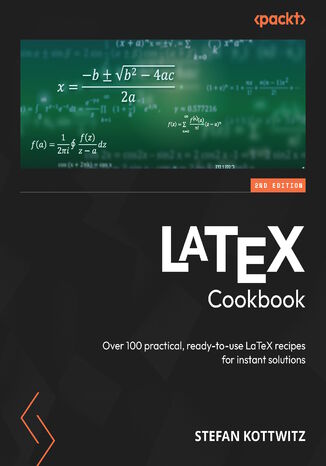Kategorie
Ebooki
-
Biznes i ekonomia
- Bitcoin
- Bizneswoman
- Coaching
- Controlling
- E-biznes
- Ekonomia
- Finanse
- Giełda i inwestycje
- Kompetencje osobiste
- Komputer w biurze
- Komunikacja i negocjacje
- Mała firma
- Marketing
- Motywacja
- Multimedialne szkolenia
- Nieruchomości
- Perswazja i NLP
- Podatki
- Polityka społeczna
- Poradniki
- Prezentacje
- Przywództwo
- Public Relation
- Raporty, analizy
- Sekret
- Social Media
- Sprzedaż
- Start-up
- Twoja kariera
- Zarządzanie
- Zarządzanie projektami
- Zasoby ludzkie (HR)
-
Dla dzieci
-
Dla młodzieży
-
Edukacja
-
Encyklopedie, słowniki
-
E-prasa
- Architektura i wnętrza
- BHP
- Biznes i Ekonomia
- Dom i ogród
- E-Biznes
- Ekonomia i finanse
- Ezoteryka
- Finanse
- Finanse osobiste
- Firma
- Fotografia
- Informatyka
- Kadry i płace
- Kobieca
- Komputery, Excel
- Księgowość
- Kultura i literatura
- Naukowe i akademickie
- Ochrona środowiska
- Opiniotwórcze
- Oświata
- Podatki
- Podróże
- Psychologia
- Religia
- Rolnictwo
- Rynek książki i prasy
- Transport i Spedycja
- Zdrowie i uroda
-
Historia
-
Informatyka
- Aplikacje biurowe
- Bazy danych
- Bioinformatyka
- Biznes IT
- CAD/CAM
- Digital Lifestyle
- DTP
- Elektronika
- Fotografia cyfrowa
- Grafika komputerowa
- Gry
- Hacking
- Hardware
- IT w ekonomii
- Pakiety naukowe
- Podręczniki szkolne
- Podstawy komputera
- Programowanie
- Programowanie mobilne
- Serwery internetowe
- Sieci komputerowe
- Start-up
- Systemy operacyjne
- Sztuczna inteligencja
- Technologia dla dzieci
- Webmasterstwo
-
Inne
-
Języki obce
-
Kultura i sztuka
-
Lektury szkolne
-
Literatura
- Antologie
- Ballada
- Biografie i autobiografie
- Dla dorosłych
- Dramat
- Dzienniki, pamiętniki, listy
- Epos, epopeja
- Esej
- Fantastyka i science-fiction
- Felietony
- Fikcja
- Humor, satyra
- Inne
- Klasyczna
- Kryminał
- Literatura faktu
- Literatura piękna
- Mity i legendy
- Nobliści
- Nowele
- Obyczajowa
- Okultyzm i magia
- Opowiadania
- Pamiętniki
- Podróże
- Poemat
- Poezja
- Polityka
- Popularnonaukowa
- Powieść
- Powieść historyczna
- Proza
- Przygodowa
- Publicystyka
- Reportaż
- Romans i literatura obyczajowa
- Sensacja
- Thriller, Horror
- Wywiady i wspomnienia
-
Nauki przyrodnicze
-
Nauki społeczne
-
Podręczniki szkolne
-
Popularnonaukowe i akademickie
- Archeologia
- Bibliotekoznawstwo
- Filmoznawstwo
- Filologia
- Filologia polska
- Filozofia
- Finanse i bankowość
- Geografia
- Gospodarka
- Handel. Gospodarka światowa
- Historia i archeologia
- Historia sztuki i architektury
- Kulturoznawstwo
- Lingwistyka
- Literaturoznawstwo
- Logistyka
- Matematyka
- Medycyna
- Nauki humanistyczne
- Pedagogika
- Pomoce naukowe
- Popularnonaukowa
- Pozostałe
- Psychologia
- Socjologia
- Teatrologia
- Teologia
- Teorie i nauki ekonomiczne
- Transport i spedycja
- Wychowanie fizyczne
- Zarządzanie i marketing
-
Poradniki
-
Poradniki do gier
-
Poradniki zawodowe i specjalistyczne
-
Prawo
- BHP
- Historia
- Kodeks drogowy. Prawo jazdy
- Nauki prawne
- Ochrona zdrowia
- Ogólne, kompendium wiedzy
- Podręczniki akademickie
- Pozostałe
- Prawo budowlane i lokalowe
- Prawo cywilne
- Prawo finansowe
- Prawo gospodarcze
- Prawo gospodarcze i handlowe
- Prawo karne
- Prawo karne. Przestępstwa karne. Kryminologia
- Prawo międzynarodowe
- Prawo międzynarodowe i zagraniczne
- Prawo ochrony zdrowia
- Prawo oświatowe
- Prawo podatkowe
- Prawo pracy i ubezpieczeń społecznych
- Prawo publiczne, konstytucyjne i administracyjne
- Prawo rodzinne i opiekuńcze
- Prawo rolne
- Prawo socjalne, prawo pracy
- Prawo Unii Europejskiej
- Przemysł
- Rolne i ochrona środowiska
- Słowniki i encyklopedie
- Zamówienia publiczne
- Zarządzanie
-
Przewodniki i podróże
- Afryka
- Albumy
- Ameryka Południowa
- Ameryka Środkowa i Północna
- Australia, Nowa Zelandia, Oceania
- Austria
- Azja
- Bałkany
- Bliski Wschód
- Bułgaria
- Chiny
- Chorwacja
- Czechy
- Dania
- Egipt
- Estonia
- Europa
- Francja
- Góry
- Grecja
- Hiszpania
- Holandia
- Islandia
- Litwa
- Łotwa
- Mapy, Plany miast, Atlasy
- Miniprzewodniki
- Niemcy
- Norwegia
- Podróże aktywne
- Polska
- Portugalia
- Pozostałe
- Przewodniki po hotelach i restauracjach
- Rosja
- Rumunia
- Słowacja
- Słowenia
- Szwajcaria
- Szwecja
- Świat
- Turcja
- Ukraina
- Węgry
- Wielka Brytania
- Włochy
-
Psychologia
- Filozofie życiowe
- Kompetencje psychospołeczne
- Komunikacja międzyludzka
- Mindfulness
- Ogólne
- Perswazja i NLP
- Psychologia akademicka
- Psychologia duszy i umysłu
- Psychologia pracy
- Relacje i związki
- Rodzicielstwo i psychologia dziecka
- Rozwiązywanie problemów
- Rozwój intelektualny
- Sekret
- Seksualność
- Uwodzenie
- Wygląd i wizerunek
- Życiowe filozofie
-
Religia
-
Sport, fitness, diety
-
Technika i mechanika
Audiobooki
-
Biznes i ekonomia
- Bitcoin
- Bizneswoman
- Coaching
- Controlling
- E-biznes
- Ekonomia
- Finanse
- Giełda i inwestycje
- Kompetencje osobiste
- Komunikacja i negocjacje
- Mała firma
- Marketing
- Motywacja
- Nieruchomości
- Perswazja i NLP
- Podatki
- Polityka społeczna
- Poradniki
- Prezentacje
- Przywództwo
- Public Relation
- Sekret
- Social Media
- Sprzedaż
- Start-up
- Twoja kariera
- Zarządzanie
- Zarządzanie projektami
- Zasoby ludzkie (HR)
-
Dla dzieci
-
Dla młodzieży
-
Edukacja
-
Encyklopedie, słowniki
-
E-prasa
-
Historia
-
Informatyka
-
Inne
-
Języki obce
-
Kultura i sztuka
-
Lektury szkolne
-
Literatura
- Antologie
- Ballada
- Biografie i autobiografie
- Dla dorosłych
- Dramat
- Dzienniki, pamiętniki, listy
- Epos, epopeja
- Esej
- Fantastyka i science-fiction
- Felietony
- Fikcja
- Humor, satyra
- Inne
- Klasyczna
- Kryminał
- Literatura faktu
- Literatura piękna
- Mity i legendy
- Nobliści
- Nowele
- Obyczajowa
- Okultyzm i magia
- Opowiadania
- Pamiętniki
- Podróże
- Poezja
- Polityka
- Popularnonaukowa
- Powieść
- Powieść historyczna
- Proza
- Przygodowa
- Publicystyka
- Reportaż
- Romans i literatura obyczajowa
- Sensacja
- Thriller, Horror
- Wywiady i wspomnienia
-
Nauki przyrodnicze
-
Nauki społeczne
-
Popularnonaukowe i akademickie
-
Poradniki
-
Poradniki zawodowe i specjalistyczne
-
Prawo
-
Przewodniki i podróże
-
Psychologia
- Filozofie życiowe
- Komunikacja międzyludzka
- Mindfulness
- Ogólne
- Perswazja i NLP
- Psychologia akademicka
- Psychologia duszy i umysłu
- Psychologia pracy
- Relacje i związki
- Rodzicielstwo i psychologia dziecka
- Rozwiązywanie problemów
- Rozwój intelektualny
- Sekret
- Seksualność
- Uwodzenie
- Wygląd i wizerunek
- Życiowe filozofie
-
Religia
-
Sport, fitness, diety
-
Technika i mechanika
Kursy video
-
Bazy danych
-
Big Data
-
Biznes, ekonomia i marketing
-
Cyberbezpieczeństwo
-
Data Science
-
DevOps
-
Dla dzieci
-
Elektronika
-
Grafika/Wideo/CAX
-
Gry
-
Microsoft Office
-
Narzędzia programistyczne
-
Programowanie
-
Rozwój osobisty
-
Sieci komputerowe
-
Systemy operacyjne
-
Testowanie oprogramowania
-
Urządzenia mobilne
-
UX/UI
-
Web development
-
Zarządzanie
Podcasty
Cloud technologies have made identity and access the new control plane for securing data. Without proper planning and discipline in deploying, monitoring, and managing identity and access for users, administrators, and guests, you may be compromising your infrastructure and data. This book is a preparation guide that covers all the objectives of the SC-300 exam, while teaching you about the identity and access services that are available from Microsoft and preparing you for real-world challenges.The book starts with an overview of the SC-300 exam and helps you understand identity and access management. As you progress to the implementation of IAM solutions, you’ll learn to deploy secure identity and access within Microsoft 365 and Azure Active Directory. The book will take you from legacy on-premises identity solutions to modern and password-less authentication solutions that provide high-level security for identity and access. You’ll focus on implementing access and authentication for cloud-only and hybrid infrastructures as well as understand how to protect them using the principles of zero trust. The book also features mock tests toward the end to help you prepare effectively for the exam.By the end of this book, you’ll have learned how to plan, deploy, and manage identity and access solutions for Microsoft and hybrid infrastructures.
Competition within the gaming industry has become significantly fiercer in recent years with the adoption of game development frameworks such as Unity3D. Through its massive feature-set and ease-of-use, Unity helps put some of the best processing and rendering technology in the hands of hobbyists and professionals alike. This has led to an enormous explosion of talent, which has made it critical to ensure our games stand out from the crowd through a high level of quality. A good user experience is essential to create a solid product that our users will enjoy for many years to come.Nothing turns gamers away from a game faster than a poor user-experience. Input latency, slow rendering, broken physics, stutters, freezes, and crashes are among a gamer's worst nightmares and it's up to us as game developers to ensure this never happens. High performance does not need to be limited to games with the biggest teams and budgets.Initially, you will explore the major features of the Unity3D Engine from top to bottom, investigating a multitude of ways we can improve application performance starting with the detection and analysis of bottlenecks. You'll then gain an understanding of possible solutions and how to implement them. You will then learn everything you need to know about where performance bottlenecks can be found, why they happen, and how to work around them.This book gathers a massive wealth of knowledge together in one place, saving many hours of research and can be used as a quick reference to solve specific issues that arise during product development.
Drawing in a browser without images has been around for a long time but it was a complex task with browser support issues. Raphael JS aims to solve all these problems with simple and clear methods to draw cross-browser compatible drawings. Imagine drawing complex dials, graphs, and meters for a dashboard, all without images, and the ability to dynamically manipulate those drawings. Creativity is the only limit with Raphael JS.Instant RaphaelJS Starter is a practical, hands-on guide that provides you with a number of clear step-by-step exercises, which will help you take advantage of the real power that is behind Raphael JS, and give you a good grounding in using it in your web pages.Instant RaphaelJS Starter looks at the HTML5 video formats available, and breaks down the mystery and confusion that surrounds which format to use. It will take you through a number of clear, practical recipes that will help you to take advantage of the new HTML5 video standard, quickly and painlessly. You will also learn how to draw your own shapes using any vector graphics editor, or by using one of the pre-defined shapes. We will also take a look at adding functionality such as DOM events, or animations, as well as how to manipulate the shapes dynamically. If you want to take advantage of imageless vector graphics for browsers using Raphael JS, then this is the book for you.You will learn everything you need to know to convert shapes and perform animations, as well as how to draw custom shapes with simple techniques using Raphael JS and use them across multiple browsers.
With experienced hackers constantly targeting apps, properly securing them becomes challenging when you integrate this factor with legacy code, new technologies, and other frameworks. Written by a Lead Cloud and Security Architect as well as CISSP, this book helps you easily secure your Java apps with Spring Security, a trusted and highly customizable authentication and access control framework.The book shows you how to implement different authentication mechanisms and properly restrict access to your app. You’ll learn to integrate Spring Security with popular web frameworks like Thymeleaf and Microservice and Cloud services like Zookeeper and Eureka, along with architecting solutions that leverage its full power while staying loosely coupled. You’ll also see how Spring Security defends against session fixation, moves into concurrency control, and how you can use session management for administrative functions. This fourth edition aligns with Java 17/21 and Spring Security 6, covering advanced security scenarios for RESTful web services and microservices. This ensures you fully understand the issues surrounding stateless authentication and discover a concise approach to solving those issues.By the end of this book, you’ll be able to integrate Spring Security 6 with GraalVM native images seamlessly, from start to finish.
A natural and difficult tension exists between a project team (supply) and its customer (demand); a professional ScrumMaster relaxes this tension using the Scrum framework so that the team arrives at the best possible outcome.The Professional ScrumMaster's Handbook is a practical, no-nonsense guide to helping you become an inspiring and effective ScrumMaster known for getting results.This book goes into great detail about why it seems like you're fighting traditional management culture every step of the way. You will explore the three roles of Scrum and how, working in harmony, they can deliver a product in the leanest way possible. You'll understand that even though there is no room for a project manager in Scrum, there are certain “management” aspects you should be familiar with to help you along the way. Getting a team to manage itself and take responsibility is no easy feat; this book will show you how to earn trust by displaying it and inspiring courage in a team every day.The Professional ScrumMaster's Handbook will challenge you to dig deep within yourself to improve your mindset, practices, and values in order to build and support the very best agile teams.
It's now more important than ever for organizations to be ready to detect and respond to security events and breaches. Preventive measures alone are not enough for dealing with adversaries. A well-rounded prevention, detection, and response program is required. This book will guide you through the stages of building a red team program, including strategies and homefield advantage opportunities to boost security.The book starts by guiding you through establishing, managing, and measuring a red team program, including effective ways for sharing results and findings to raise awareness. Gradually, you'll learn about progressive operations such as cryptocurrency mining, focused privacy testing, targeting telemetry, and even blue team tooling. Later, you'll discover knowledge graphs and how to build them, then become well-versed with basic to advanced techniques related to hunting for credentials, and learn to automate Microsoft Office and browsers to your advantage. Finally, you'll get to grips with protecting assets using decoys, auditing, and alerting with examples for major operating systems.By the end of this book, you'll have learned how to build, manage, and measure a red team program effectively and be well-versed with the fundamental operational techniques required to enhance your existing skills.
The second edition of LaTeX Cookbook offers improved and additional examples especially for users in science and academia, with a focus on new packages for creating graphics with LaTeX. This edition also features an additional chapter on ChatGPT use to improve content, streamline code, and automate tasks, thereby saving time. This book is a practical guide to utilizing the capabilities of modern document classes and exploring the functionalities of the newest LaTeX packages. Starting with familiar document types like articles, books, letters, posters, leaflets, and presentations, it contains detailed tutorials for refining text design, adjusting fonts, managing images, creating tables, and optimizing PDFs. It also covers elements such as the bibliography, glossary, and index. You’ll learn to create graphics directly within LaTeX, including diagrams and plots, and explore LaTeX’s application across various fields like mathematics, physics, chemistry, and computer science. The book’s website offers online compilable code, an example gallery, and supplementary information related to the book, including the author’s LaTeX forum, where you can get personal support. By the end of this book, you’ll have the skills to optimize productivity through practical demonstrations of effective LaTeX usage in diverse scenarios.
SOLIDWORKS is the leading choice for 3D engineering and product design applications across industries such as aviation, automobile, and consumer product design. This book helps you to get up and running with SOLIDWORKS and understand each new concept and tool with the help of easy-to-follow exercises.You'll begin with the basics, exploring the software interface and finding out how to work with drawing files. The book then guides you through topics such as sketching, building complex 3D models, generating dynamic and static assemblies, and generating 2D engineering drawings to prepare you to take on any design project. You'll also work with practical exercises to get hands-on experience with creating sketches, 3D part models, assemblies, and drawings. To reinforce your understanding of SOLIDWORKS, the book is supplemented by downloadable files that will help you to understand the concepts and exercises more easily. Finally, you'll also work on projects for 3D modeling objects inspired by everyday life.By the end of this SOLIDWORKS book, you'll have gained the skills you need to create professional 3D mechanical models using SOLIDWORKS and be able to prepare effectively for the Certified SOLIDWORKS Associate (CSWA) and Certified SOLIDWORKS Professional (CSWP) exams.

